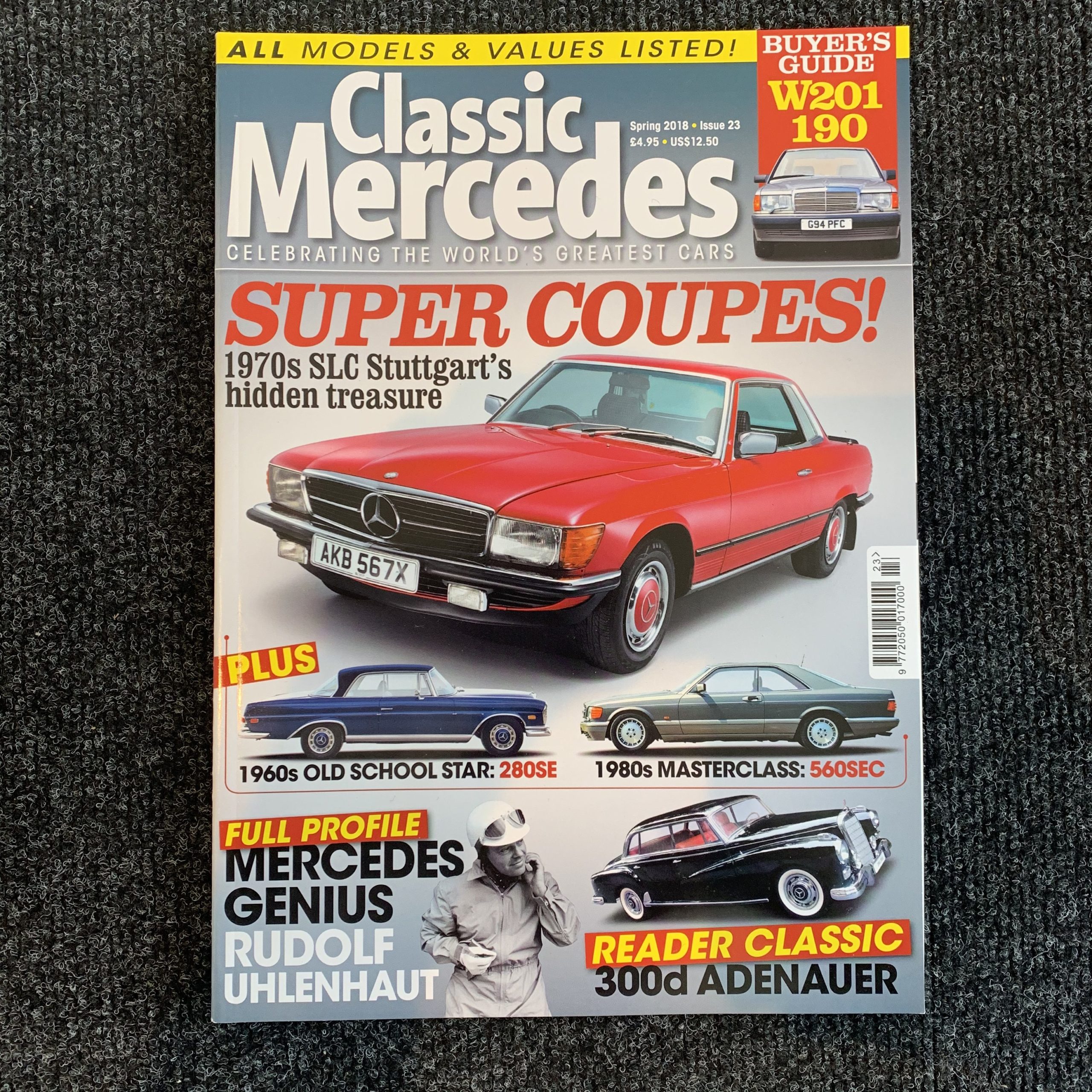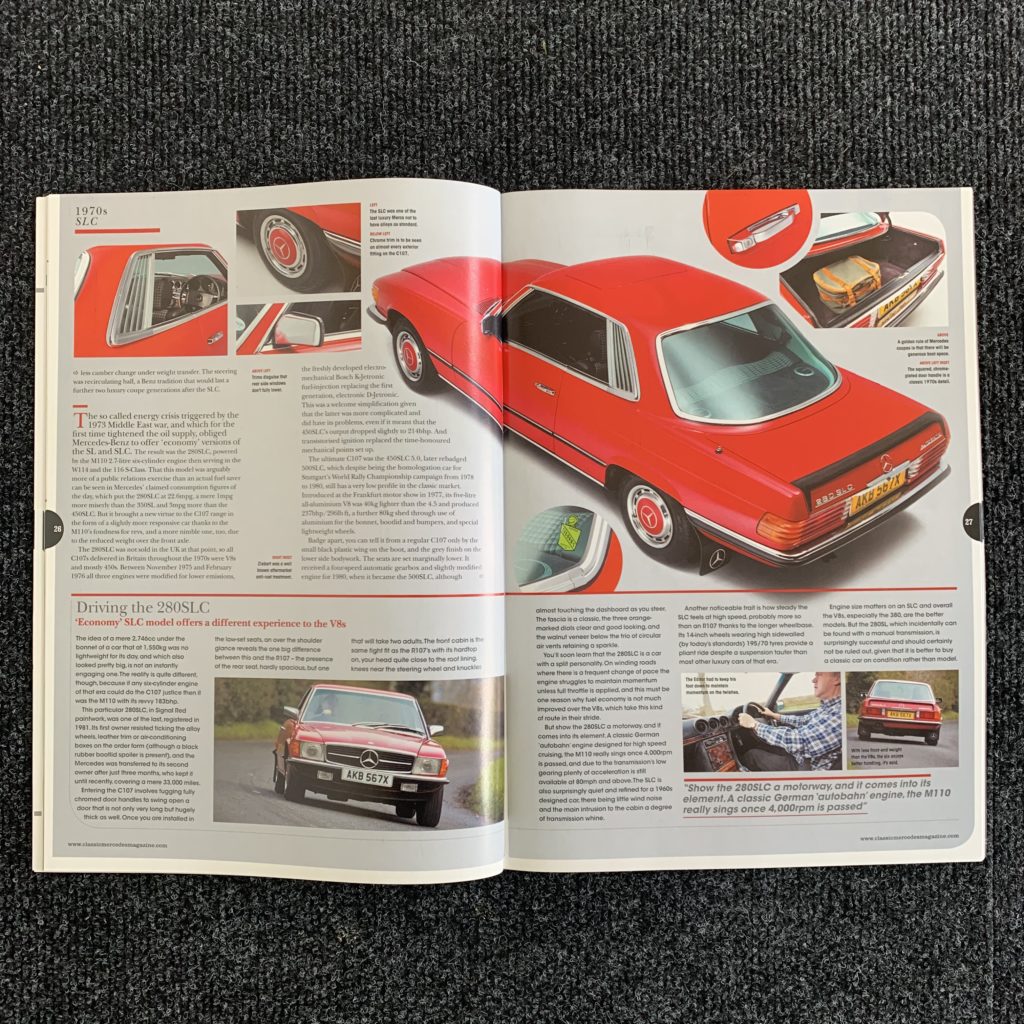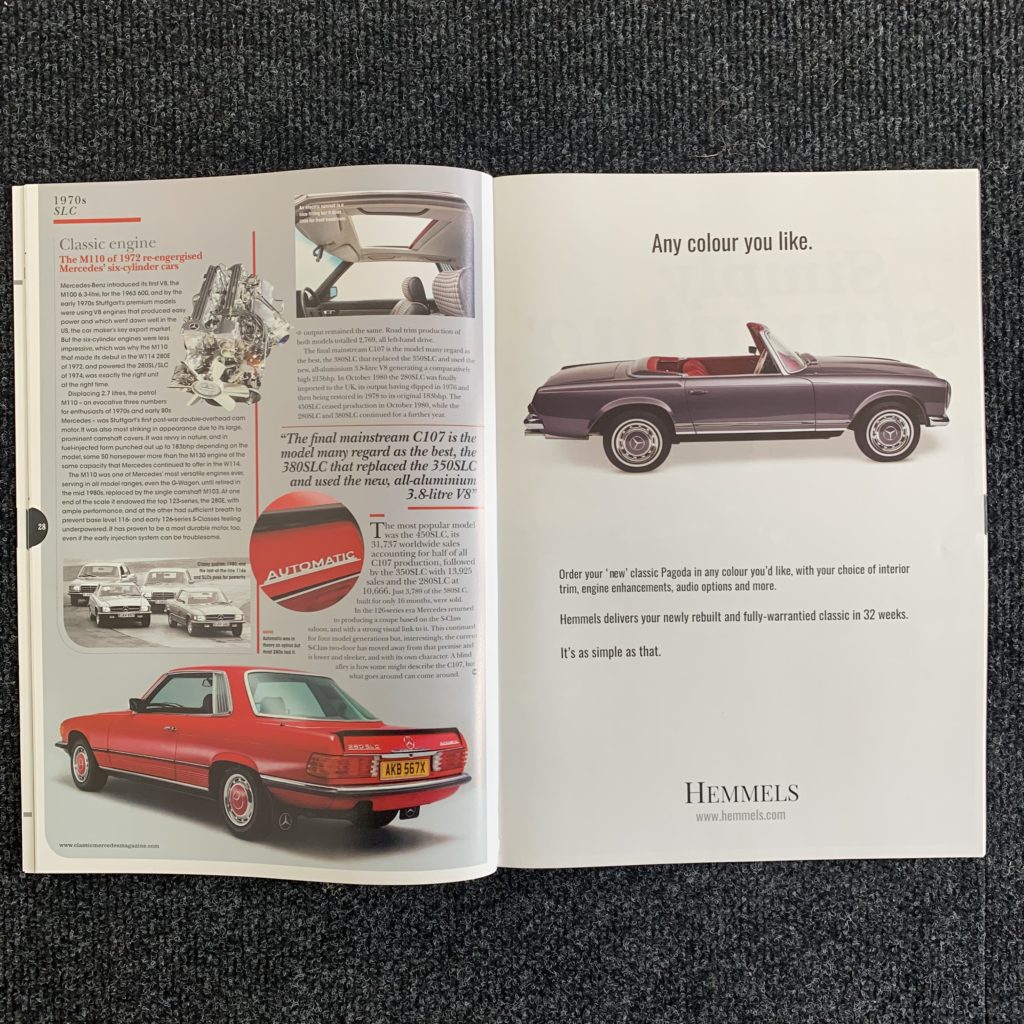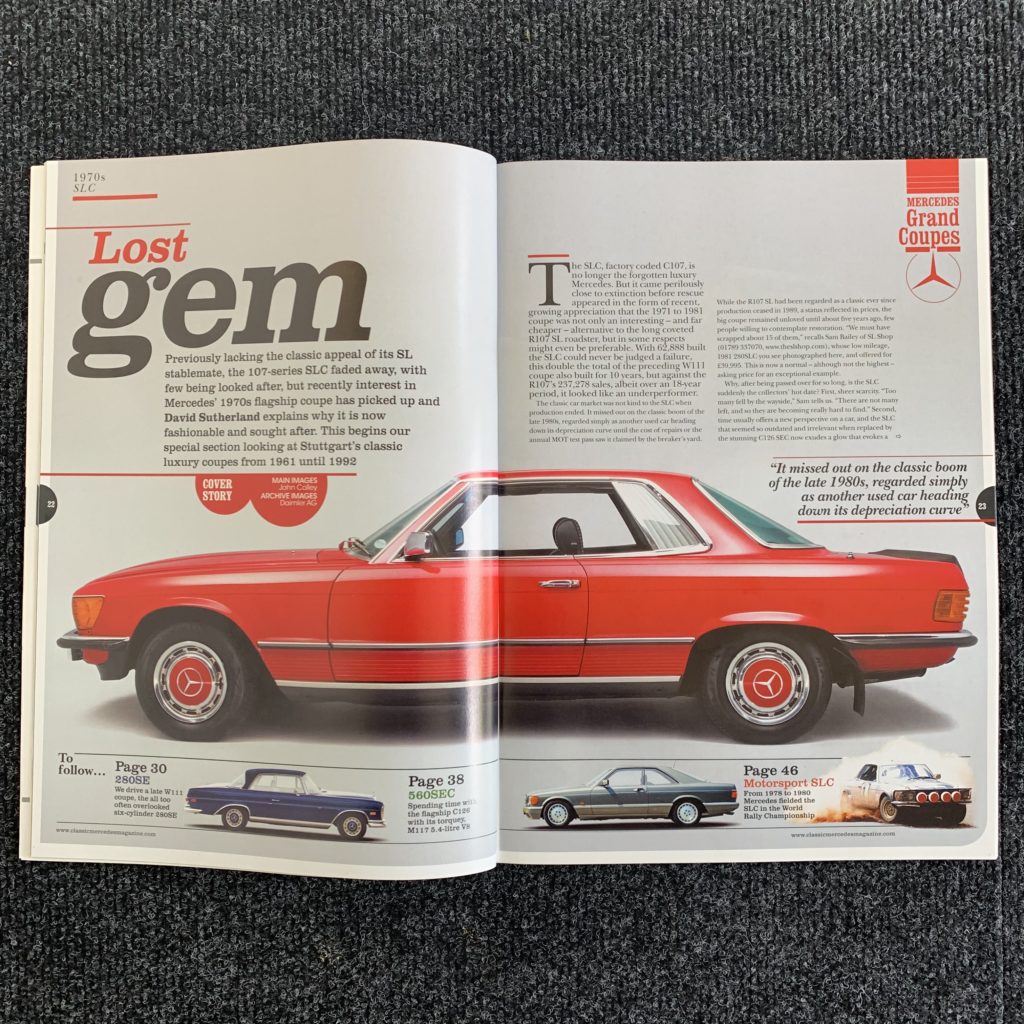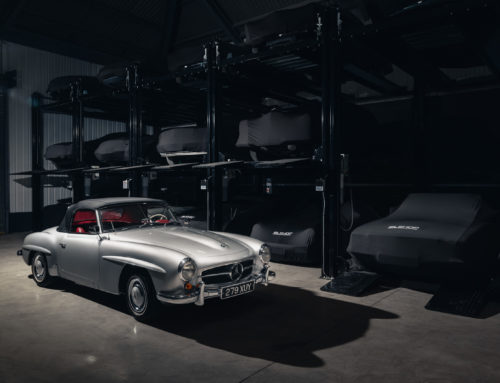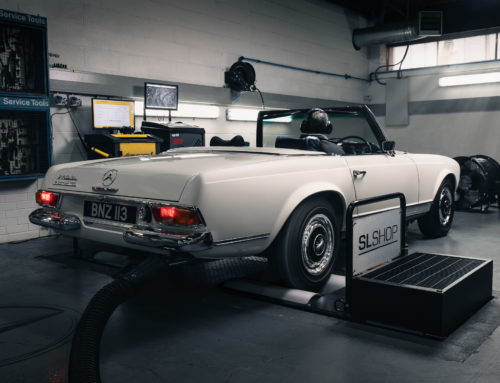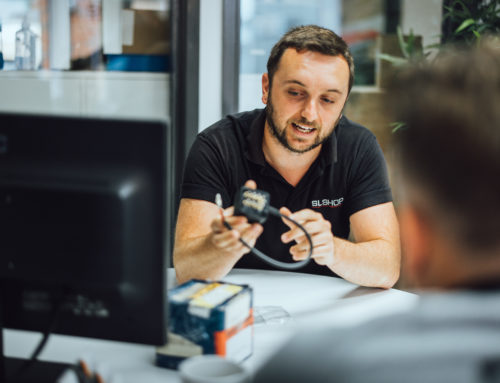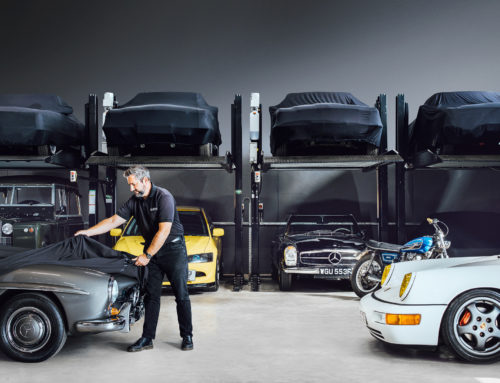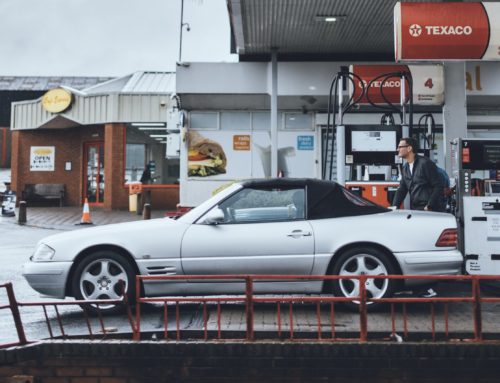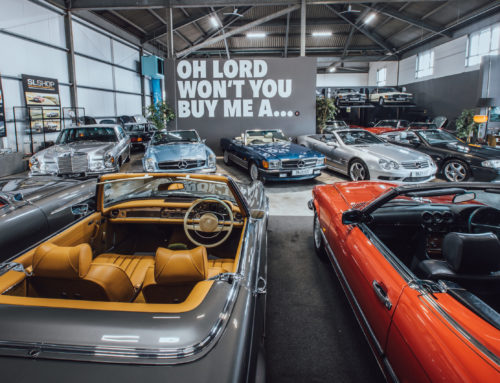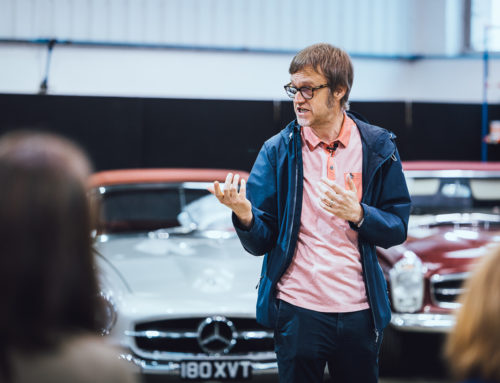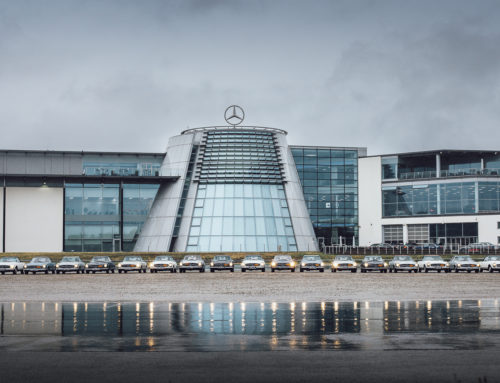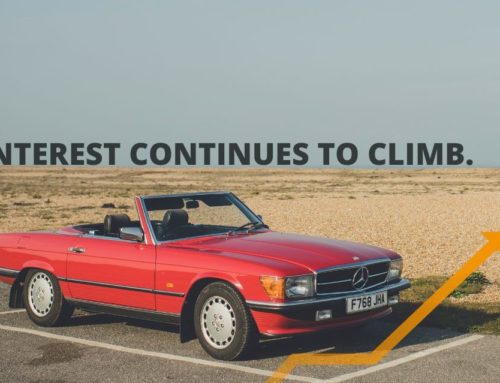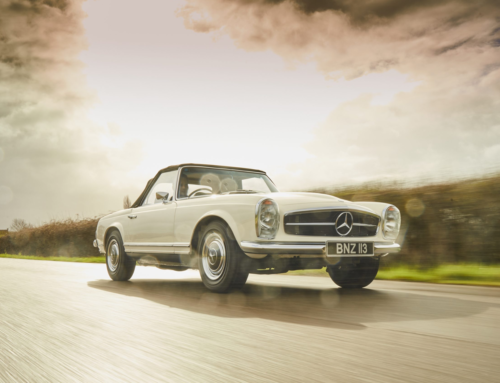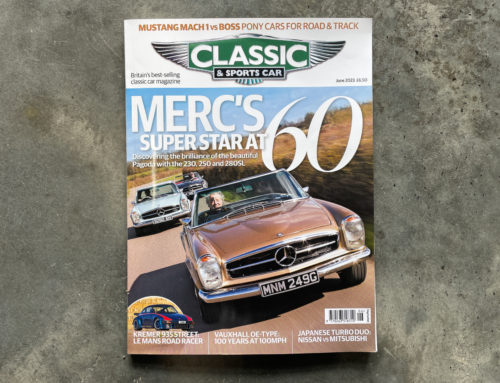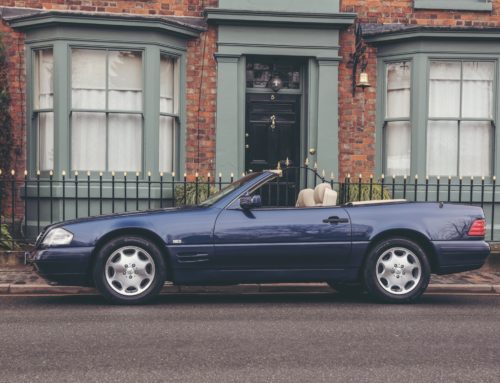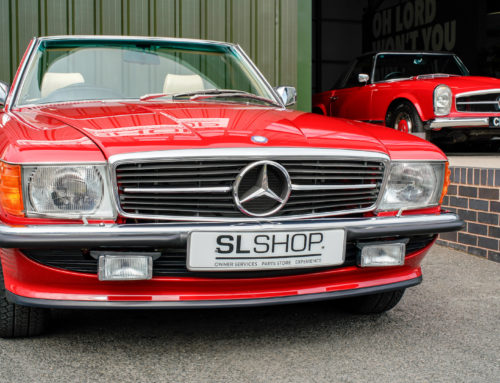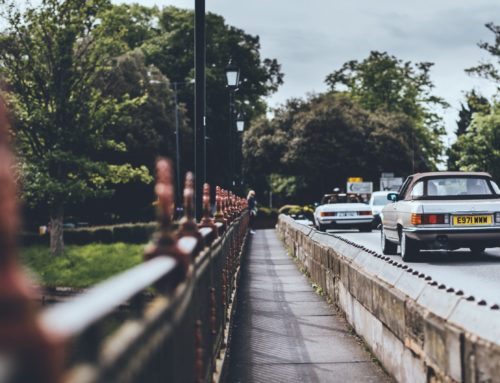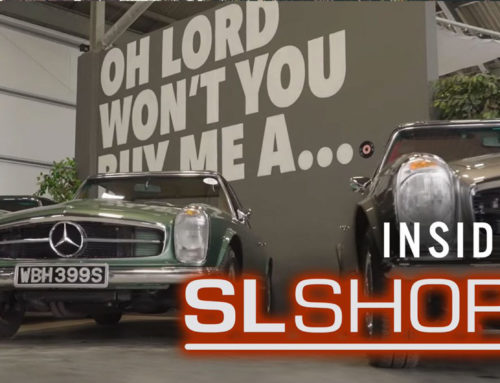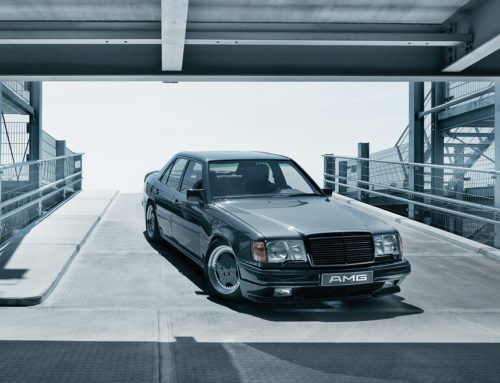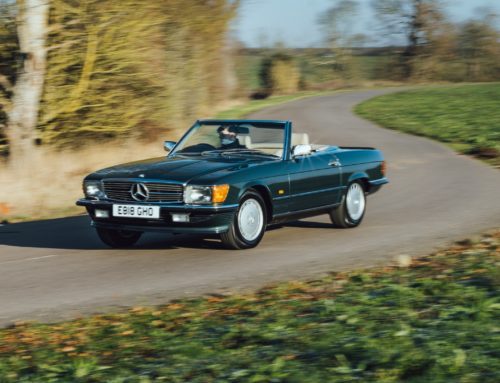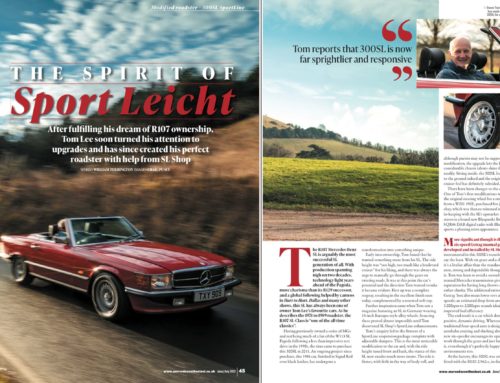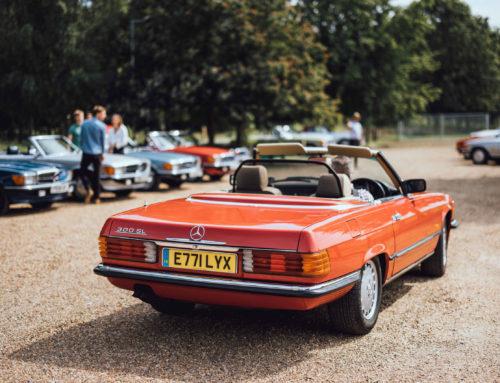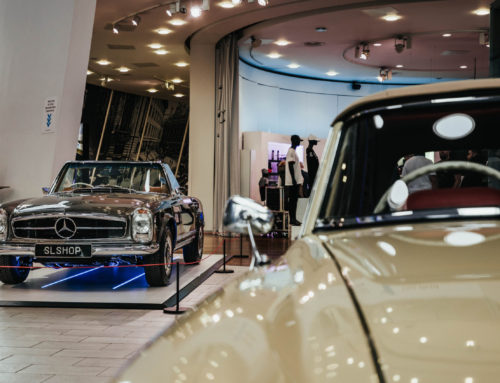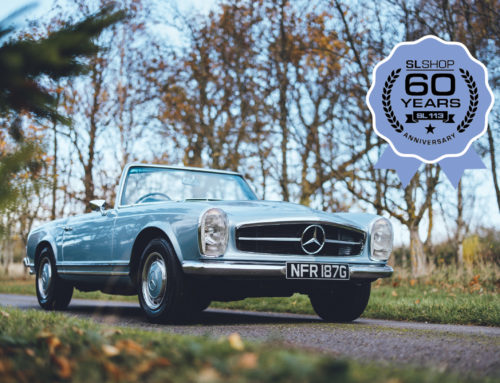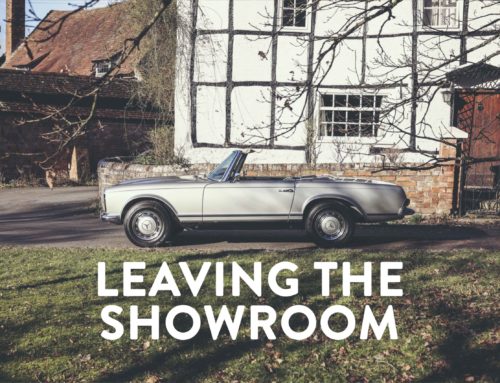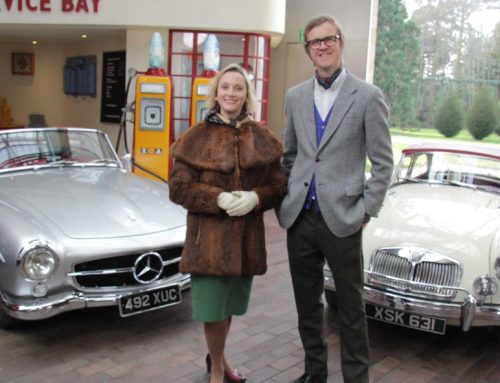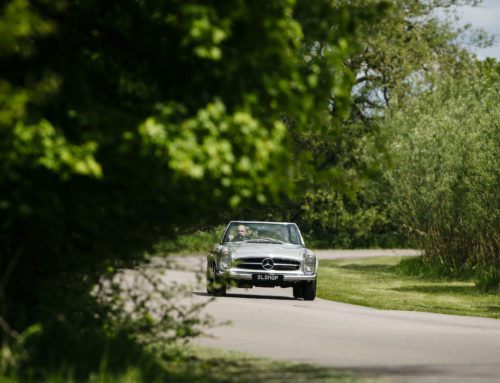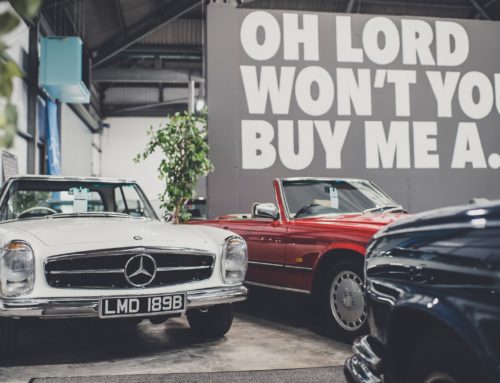1970s SLC
The so-called energy crisis triggered by the 1973 Middle East war, and which for the first time tightened the oil supply, obliged Mercedes-Benz to offer ‘economy’ versions of the SL and SLC. The result was the 280SLC, powered by the M110 2.7 litre six-cylinder engine then serving in the W114 and the 116 S-Class.
That this model was arguably more of a public relations exercise than an actual fuel saver can be seen in Mercedes’ claimed consumption figures of the day, which put the 280SLC at 22.6mpg, a mere 1mpg more miserly than the 350LL and 3mpg more than the 450SLC. But it brought a new virtue to the C107 range in the form of a slightly more responsive car thanks to the M110’s fondness for revs, and a nimbler one, too, due to the reduced weight over the front axle.
The 280SLC was not sold in the UK at that point, so all C107s delivered in Britain throughout the 1970s were V8s and mostly 450s. Between November 1975 and February 1976 all three engines were modified for lower emissions, the freshly developed electromechanical Bosch K-Jetronic fuel-injection replacing the first generation, electronic D-Jetronic. This was a welcome simplification given that the latter was more complicated and did have its problems, even it if meant that the 450SLC’s output dropped slightly to 214bhp. And transistorised ignition replaced the time-honoured mechanical points set up.
The ultimate C107 was the 450SKC 5.0, later rebadged 5000SLC, which despite being the homologation car for Stuttgart’s World Rally Championship campaign from 1978 to 1980, still has a very low profile in the classic market. Introduced at the Frankfurt motor show in 1977, its five-litre all-aluminium V8 was 40kg lighter than the 4.5 and produced 237bhp/296lb ft, a further 80kg shed through use of aluminium for the bonnet, boot lid and bumpers, and special lightweight wheels.
Badge apart, you can tell it from a regular C107 only by the small black plastic wing on the boot, and the grey finish on the lower side bodywork. The seats are marginally lower. It received a four-speed automatic gearbox and slightly modified engine for 1980, when it became the 500SLC, although output remained the same. Road trim production of both models totalled 2,700, all left-hand drive.
The final mainstream C107 is the model many regard as the best, the 380SLC that replaced the 350SLC and used the new, all-aluminium 3.8 litre V8 generating a comparatively high 215bhp. In October 1980 the 280SLC was finally imported to the UK, its output having dipped in 1976 and then being restored in 1978 to its original 183bhp. The 450SLC ceased production in October 1980, while the 280SLC and 380LC continued for a further year.
The most popular model was the 450SLC, its 31,737 worldwide sales accounting for half of all C107 production, followed by the 350SLC with 13,925 sales and the 280SLC at 10,666. Just 3,789 of the 380SLC, built for only 16 months, were sold. In the 126-series cars Mercedes returned to producing a couple based on the S-Class salon, and with a strong visual link to it. This continued for four model generations but, interestingly, the current S-Class two-door has moved away from that premise and is lower and sleeker, and with its own character. A blind alley is how some might describe the C107, but what goes around can come around.
Driving the 280SLC
‘Economy’ SLC model offers a different experience to the V8s.
The idea of a mere 2,746cc under the bonnet of a car that at 1,550kg was no lightweight for its day, and which also looked pretty big, is not an instantly engaging one. The reality is quite different, though, because if any six-cylinder engine of that era could do the C107 justice then it was the M110 with its revy 183bhp.
This particular 280SLC, in Signal Red paintwork, was one of the last registered in 1981. Its first owner resisted ticking the alloy wheels, leather trim or air-conditioning boxes on the order form (although a black rubber boot lid spoiler is present), and the Mercedes was transferred to its second owner after just three months, who kept it until recently, covering a mere 33,000 miles.
Entering the C107 involves tugging fully-chromed door handles to swing open a door that is not only very long but hugely thick as well. Once you are installed in the low-set seats, an over the shoulder glance reveals the one big difference between this and the R107 – the presence of the rear seat, hardly spacious, but one that will take two adults. The front cabin is the same tight fit as the R107’s with its hardtop on, your head quite close to the roof lining, knees near the steering wheel and knuckles almost touching the dashboard as you steer. The fascia is a classic, the three orange-marked dials clear and good looking, and the walnut veneer below the trio of circular air vents retaining a sparkle.
You’ll soon learn that the 280SLC is a car with a split personality. On winding roads where there is a frequent change of pace the engine struggles to maintain momentum unless full throttle is applied, and this must be one reason why fuel economy is not much improved over the V8s, which take this kind of route in their stride.
But show the 280SLC a motorway, and it comes into its element. A classic German ‘autobahn’ engine designed for high speed cruising, the M110 really sings once 4,000rpm is passed, and due to the transmission’s low gearing plenty of acceleration is still available at 80mph and above. The SLC is also surprisingly quiet and refined for a 1960s designed car, there being little wind noise and the main intrusion to the cabin a degree of transmission whine.
Another noticeable trait is how steady the SLC feels at high speed, probably more so than an R107 thanks to the longer wheelbase. Its 14-inch wheels wearing high side-walled (by today’s standards) 195/70 tyres provide a pliant ride despite a suspension tauter than most other luxury cars of that era.
1970s SLC
The so-called energy crisis triggered by the 1973 Middle East war, and which for the first time tightened the oil supply, obliged Mercedes-Benz to offer ‘economy’ versions of the SL and SLC. The result was the 280SLC, powered by the M110 2.7 litre six-cylinder engine then serving in the W114 and the 116 S-Class.
That this model was arguably more of a public relations exercise than an actual fuel saver can be seen in Mercedes’ claimed consumption figures of the day, which put the 280SLC at 22.6mpg, a mere 1mpg more miserly than the 350LL and 3mpg more than the 450SLC. But it brought a new virtue to the C107 range in the form of a slightly more responsive car thanks to the M110’s fondness for revs, and a nimbler one, too, due to the reduced weight over the front axle.
The 280SLC was not sold in the UK at that point, so all C107s delivered in Britain throughout the 1970s were V8s and mostly 450s. Between November 1975 and February 1976 all three engines were modified for lower emissions, the freshly developed electromechanical Bosch K-Jetronic fuel-injection replacing the first generation, electronic D-Jetronic. This was a welcome simplification given that the latter was more complicated and did have its problems, even it if meant that the 450SLC’s output dropped slightly to 214bhp. And transistorised ignition replaced the time-honoured mechanical points set up.
The ultimate C107 was the 450SKC 5.0, later rebadged 5000SLC, which despite being the homologation car for Stuttgart’s World Rally Championship campaign from 1978 to 1980, still has a very low profile in the classic market. Introduced at the Frankfurt motor show in 1977, its five-litre all-aluminium V8 was 40kg lighter than the 4.5 and produced 237bhp/296lb ft, a further 80kg shed through use of aluminium for the bonnet, boot lid and bumpers, and special lightweight wheels.
Badge apart, you can tell it from a regular C107 only by the small black plastic wing on the boot, and the grey finish on the lower side bodywork. The seats are marginally lower. It received a four-speed automatic gearbox and slightly modified engine for 1980, when it became the 500SLC, although output remained the same. Road trim production of both models totalled 2,700, all left-hand drive.
The final mainstream C107 is the model many regard as the best, the 380SLC that replaced the 350SLC and used the new, all-aluminium 3.8 litre V8 generating a comparatively high 215bhp. In October 1980 the 280SLC was finally imported to the UK, its output having dipped in 1976 and then being restored in 1978 to its original 183bhp. The 450SLC ceased production in October 1980, while the 280SLC and 380LC continued for a further year.
The most popular model was the 450SLC, its 31,737 worldwide sales accounting for half of all C107 production, followed by the 350SLC with 13,925 sales and the 280SLC at 10,666. Just 3,789 of the 380SLC, built for only 16 months, were sold. In the 126-series cars Mercedes returned to producing a couple based on the S-Class salon, and with a strong visual link to it. This continued for four model generations but, interestingly, the current S-Class two-door has moved away from that premise and is lower and sleeker, and with its own character. A blind alley is how some might describe the C107, but what goes around can come around.
Driving the 280SLC
‘Economy’ SLC model offers a different experience to the V8s.
The idea of a mere 2,746cc under the bonnet of a car that at 1,550kg was no lightweight for its day, and which also looked pretty big, is not an instantly engaging one. The reality is quite different, though, because if any six-cylinder engine of that era could do the C107 justice then it was the M110 with its revy 183bhp.
This particular 280SLC, in Signal Red paintwork, was one of the last registered in 1981. Its first owner resisted ticking the alloy wheels, leather trim or air-conditioning boxes on the order form (although a black rubber boot lid spoiler is present), and the Mercedes was transferred to its second owner after just three months, who kept it until recently, covering a mere 33,000 miles.
Entering the C107 involves tugging fully-chromed door handles to swing open a door that is not only very long but hugely thick as well. Once you are installed in the low-set seats, an over the shoulder glance reveals the one big difference between this and the R107 – the presence of the rear seat, hardly spacious, but one that will take two adults. The front cabin is the same tight fit as the R107’s with its hardtop on, your head quite close to the roof lining, knees near the steering wheel and knuckles almost touching the dashboard as you steer. The fascia is a classic, the three orange-marked dials clear and good looking, and the walnut veneer below the trio of circular air vents retaining a sparkle.
You’ll soon learn that the 280SLC is a car with a split personality. On winding roads where there is a frequent change of pace the engine struggles to maintain momentum unless full throttle is applied, and this must be one reason why fuel economy is not much improved over the V8s, which take this kind of route in their stride.
But show the 280SLC a motorway, and it comes into its element. A classic German ‘autobahn’ engine designed for high speed cruising, the M110 really sings once 4,000rpm is passed, and due to the transmission’s low gearing plenty of acceleration is still available at 80mph and above. The SLC is also surprisingly quiet and refined for a 1960s designed car, there being little wind noise and the main intrusion to the cabin a degree of transmission whine.
Another noticeable trait is how steady the SLC feels at high speed, probably more so than an R107 thanks to the longer wheelbase. Its 14-inch wheels wearing high side-walled (by today’s standards) 195/70 tyres provide a pliant ride despite a suspension tauter than most other luxury cars of that era.
More from Journal
CARE
THE ULTIMATE CERTIFIED SERVICING INVESTMENT PLAN
Your ownership journey matters to us, which is why we have created a simple certified servicing investment plan, tailored to your individual needs and aspirations.
Start investing today and our dedicated CARE team will work with you to increase the value and enjoyment you receive from your vehicle.

STAY IN TUNE WITH SLSHOP MOMENTS
As part of SLSHOP’s community of enthusiasts, you’ll be the first to hear about events and tours, key product offers, exciting stories from owners around the world and of course… our latest additions to the showroom. So, be the first to know and you might just sneak a car on your driveway or take your car’s condition to new heights with our exclusive replacement parts.
Or, visit SLSHOP Journal
